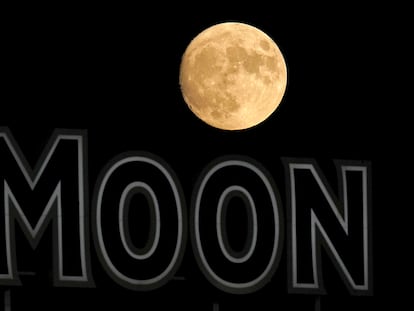US Daylight Savings Time 2023: When does it start and everything else you need to know
The US Senate is to determine if this is the last year in which citizens will have to change their clocks

The history of daylight saving time in the United States dates back to an ironic essay written by the scholar Benjamin Franklin in 1784, entitled An Economical Project to Lower the Cost of Light, for The Journal of Paris. The inventor wrote that Parisians could save money on candles by waking up earlier, taking advantage of daylight, however this was more of a tongue-in-cheek joke, and nothing came of it.
During World War I, Germany was the first country to implement daylight saving time on May 1, 1916, to save on fuel. Before long, the rest of Europe followed
It was not adopted in the US until two years later with the implementation of the Standard Time Act on March 19, 1918 (also known as the Calder Act, as it was introduced in the Senate by William M. Calder). This law confirmed the Standard Time Zone system and the summer Daylight Saving Time, defining five time zones for the country.
Daylight saving time was later abolished by Congress, despite President Woodrow Wilson’s veto, making it a local option for each state. New York was one of the states that kept daylight saving time and, due to its financial position, it influenced other states to adopt it.
During World War II, President Franklin Roosevelt implemented a new daylight saving time for the entire country, which was used throughout the year and was called “War Time”, lasting until Sunday, September 30. from 1945.
After that date, the lack of a federal daylight saving time meant that various states and territories had different schedules throughout certain months. This caused the transportation industry to push for federal regulation in 1962, resulting in the Uniform Time Act of 1966, signed by President Lyndon Johnson.
Since then, the schedule has been maintained with some test periods (in 1974 it was implemented for a whole year), while the time in which it is applied during the year has been extended.
When is daylight saving time in the United States?
Daylight saving time in the United States begins on the second Sunday in March and ends on the first Sunday in November. This year, it will start on March 12, 2023, and it will end on November 5th.
In 2024, DST will start on March 10 and will end on November 3. In 2025 the dates will be March 9 and November 2, and for 2026, March 8 and November 1.
What time is the change to daylight saving time in the United States?
The change of summer begins at 2:00 am, time in which the clocks must move forward one hour, to 3:00 am. In autumn, clocks go back one hour, from 2:00am to 1:00am. Most electronic devices do this change automatically.
What states do not follow daylight saving time in the United States?
Arizona, Hawaii, American Samoa, Guam, the Mariana Islands, Puerto Rico, and the Virgin Islands are the states and territories that do not observe daylight saving time.
Will daylight saving time be permanent in the United States?
In 2022, the United States Senate passed a bill to make daylight saving time permanent. If it happens, it would take effect in November 2023 at the end of daylight saving time this year.
Similar proposals have emerged since 2015 arguing that the lifestyle and work patterns of modern citizens are no longer compatible with changing the clock twice a year.
Sign up for our weekly newsletter to get more English-language news coverage from EL PAÍS USA Edition
Tu suscripción se está usando en otro dispositivo
¿Quieres añadir otro usuario a tu suscripción?
Si continúas leyendo en este dispositivo, no se podrá leer en el otro.
FlechaTu suscripción se está usando en otro dispositivo y solo puedes acceder a EL PAÍS desde un dispositivo a la vez.
Si quieres compartir tu cuenta, cambia tu suscripción a la modalidad Premium, así podrás añadir otro usuario. Cada uno accederá con su propia cuenta de email, lo que os permitirá personalizar vuestra experiencia en EL PAÍS.
¿Tienes una suscripción de empresa? Accede aquí para contratar más cuentas.
En el caso de no saber quién está usando tu cuenta, te recomendamos cambiar tu contraseña aquí.
Si decides continuar compartiendo tu cuenta, este mensaje se mostrará en tu dispositivo y en el de la otra persona que está usando tu cuenta de forma indefinida, afectando a tu experiencia de lectura. Puedes consultar aquí los términos y condiciones de la suscripción digital.
More information
Archived In
Últimas noticias
More than 40 Democratic lawmakers urge Trump in a letter to stop his ‘attempts to undermine democracy in Brazil’
The journal ‘Science’ criticizes Trump’s anti-renewable energy policy: ‘The US is failing to benefit from its own innovations’
Cubans hope for a miracle as dengue and chikungunya spread
The long shadow of the father figure in the films of Rob Reiner
Most viewed
- Christian Louboutin: ‘Young people don’t want to be like their parents. And if their parents wear sneakers, they’re going to look for something else’
- Cartels in Mexico take a leap forward with narco-drones: ‘It is criminal groups that are leading the innovation race’
- ‘El Limones’ and the growing union disguise of Mexican organized crime
- Liset Menéndez de la Prida, neuroscientist: ‘It’s not normal to constantly seek pleasure; it’s important to be bored, to be calm’
- The low-cost creative revolution: How technology is making art accessible to everyone











































